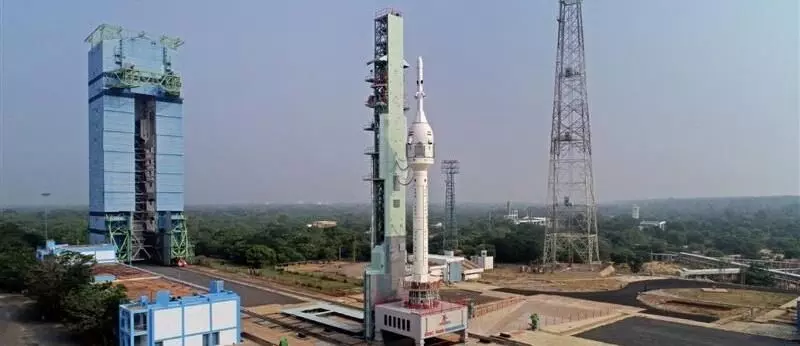
Ahead of human space flight programme, test vehicle mission successfully conducted
text_fieldsSriharikota: After overcoming some early difficulties, such as a monitoring anomaly, ISRO launched a test rocket carrying payloads for the nation's highly ambitious Gaganyaan human space mission programme successfully on Saturday.
Scientists simulated an abort situation for the Crew Escape System (CES) to carry the Crew Module out of the test vehicle, TV-D1, as they made a splash into the Bay of Bengal with planned precision, setting off jubilation among ISRO scientists at the Mission Control Centre.
Crew Module (CM) is where the astronauts are contained in a pressurised earth-like atmospheric condition during the Gaganyaan mission. For TV-D1, the CM was an unpressurised version, ISRO said. The Navy was slated to recover them from the sea and take them to the Chennai port, officials said.
"I am very happy to announce the successful accomplishment of the TV-D1 mission. The purpose of the mission was to demonstrate the crew escape system for the Gaganyaan programme through a test vehicle demonstration in which the vehicle has gone up to a Mach and above, which is the speed of sound and initiated an abort condition for the CES to function," a beaming ISRO Chairman S Somanath said from the Mission Control Centre.
The Gaganyaan programme aims to send humans into space on a Low Earth Orbit of 400 km for three days and bring them safely back to Earth.
Smiles came back on the faces of ISRO scientists much later on Saturday as weather-related issues first forced a rescheduling of the launch, from the original 8 a.m. to 8.30 a.m. and again 15 minutes later.
However, just four seconds before the single-stage liquid-propelled rocket was set to soar into the skies, a "hold" sign flashed on the screens.
"...after going through the nominal lift-off process, there was a hold issued by the ground computer which is called the automatic launch sequence computer. It detected sort of a non-conformance following the engine to continue the thrusting to further go," Somanath explained.
"This happened due to a monitoring anomaly in the system. So we could identify it very fast and correct it," he added.
It took some time to refill the gases and once that was completed, the team went through the proper automatic launch sequence which checked the entire health of the vehicle, he said. Earlier, after the initial 'hold', Somanath had said the vehicle was in good health.
Finally, the mission computer and the ground support computer authorised the launch which allowed the 34.9-metre-tall TV-D1 to take off.
"I am happy our team could understand an anomaly, rectify it and come back as fast. Congratulations to everybody. It is a big training for everybody here to prepare for the Gaganyaan programme...happy that the launch could happen within the allocated launch window," the ISRO Chairman said.
Post-launch, the announcement of every successful stage of the mission was greeted with cheers by the scientists.
"The CES took the crew module away from the vehicle and subsequent operations of the crew module, the separation of the CES, all the parachutes opening and the touchdown at the sea at the required velocity has been very well accomplished," Somanath said.
He said the space agency would come back with an unmanned Gaganyaan vehicle mission early next year.
R Hutton, Mission Executive for Crew Module Realisation and Mission Director, Gaganyaan, hailed today's success.
"In this particular mission, the most important is the safety of the crew...that has been demonstrated in the mission like a bird is taking its chicken to a safe place," he said.
The Gaganyaan mission was robust and reliable, "but we cannot take anything to chance and, therefore, if any malfunction happens there has to be a system in the launch vehicle which is called the Crew Escape System which will take the Crew Module away and then land," he said.
This has been "exactly demonstrated" today in the first mission of the test vehicle, Hutton added.
The Test Vehicle mission is a significant milestone for the overall Gaganyaan programme as a nearly complete system was integrated for a flight test.
The Crew Module System is a habitable space with an earth-like environment in space for the crew.
It houses the crew interfaces, life support system, avionics, and deceleration systems. It is also designed for re-entry to ensure the safety of the crew during the descent till touchdown.
It underwent various testing at ISRO centres ahead of its integration into the launch complex in Sriharikota.
With PTI inputs












